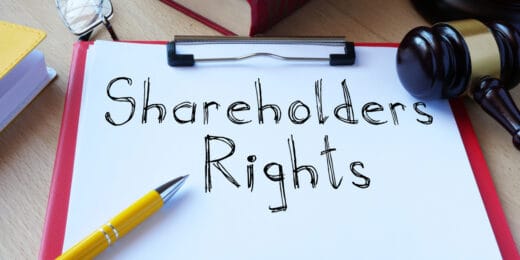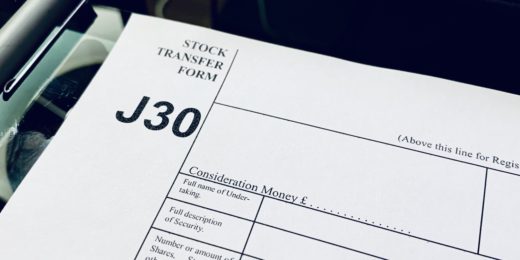Shareholders in a company limited by shares are sometimes referred to as subscribers. However, the terms shareholder and subscriber are not interchangeable. A shareholder is only deemed to be a subscriber under specific circumstances. In this article, we are going to explain what company subscribers are, compare them with company shareholders, and cover everything else you need to know.
Key Takeaways
- Subscribers are the initial shareholders named during a company’s registration, establishing their role from the outset.
- All shareholders, regardless of being subscribers, share equal rights based on their shareholdings and not their registration status.
- Subscriber information remains public, ensuring transparency even after individuals no longer hold shares in the company.
What is a company subscriber?
Subscribers of a company limited by shares are the company’s initial shareholders (shareholders being the owners of the company, who can be referred to as members). Essentially, a subscriber is anyone who is named as a shareholder during the company’s registration process.
All shareholders at registration are subscribers. When naming your shareholders, there’s no additional option to ensure these people (or other legal entities) are known as subscribers – it is a term that is automatically applied to all the shareholders who are named on the incorporation documents.
If a company is registered with two shareholders, these will both be subscribers. In the unlikely event that a new shareholder is added just minutes after the company has been registered, this person will be known only as a shareholder – never as a subscriber.
Subscribers have no additional duties, rights, or privileges when compared to shareholders who have been added after a company has been formed. These powers are informed by the shares that are held – not when the person becomes a shareholder.
A company requires a minimum of one subscriber, but can have an unlimited number.
Why are initial shareholders known as subscribers?
A company’s first shareholders are known as subscribers, because they are ‘subscribing their names to a memorandum of association’, as outlined in the Companies Act 2006.
The memorandum of association is a document that is required to register a UK limited company, alongside the articles of association and the IN01: Application to register a company form. Its purpose (for a company limited by shares) is to set out the subscribers’ intention to start a company and hold shares within it.
The memorandum of association comprises the following information:
- Company name
- First name and last name of all subscribers
- How the document was authenticated (if a company is registered online, this will state ‘Authenticated Electronically’’)
- The date that the document was completed
- This statement: ‘Each subscriber to this memorandum of association wishes to form a company under the Companies Act 2006 and agrees to become a member of the company and to take at least one share each.’
If you are in the process of registering a limited company online, do not worry if you don’t see any reference to the memorandum of association or the IN01 – the online process will collect the necessary information from you and automatically complete these forms on your behalf.
Subscribers vs. shareholders: Who has more rights?
In general terms, subscribers and shareholders are equal. The rights they have are normally defined by the number of shares that they hold and any particulars attached to these shares. Whether or not a shareholder is a subscriber has no bearing.
Typically, all shareholders (whether they are subscribers or not) have a right to:
- Vote on company issues, provided that their shares include voting rights
- Receive a share of company profits, if the directors decide to award dividends
- Request and receive company documents, including copies of annual accounts and written resolutions
- Inspect statutory records, such as the company’s Register of Members and any director service agreements
- Be notified of and attend general meetings
- Qualify for a payment if the company is wound up (once creditors have been paid and if funds are available)
- First refusal on new shares that are issued
Subscribers vs. shareholders: Who is more liable?
If a company accrues debt or were to get sued, the owners of the company are liable for the amounts not paid up on the shares they hold.
There is no preordained difference in the level of liability a subscriber has when compared to a shareholder. It is all to do with their shares and what they have agreed to pay. Being a subscriber or not has no relevance.
If a subscriber owns 10 shares with a nominal value of £1 each and none of this amount has been paid, they would be liable for a total of £10.
If a shareholder has had shares allotted to them post-incorporation (and so is not a subscriber) and owns a single share with a nominal value of £1 – which has not been paid for – they would be liable for a total of £1.
Alternatively, if the new shareholder also owned 10 shares with a nominal value of £1 each (which have not been paid for), they would also be liable for £10.
Subscribers vs. shareholders: Can they be updated?
When it comes to subscribers, no. New subscribers cannot be added or removed after the company has been incorporated. Once a person or other legal entity has been named as an initial shareholder, they can always be referred to as a subscriber of that company.
Even if all their shares are transferred away, and they have no role within the company, one would still refer to them as the company’s original subscribers.
The persons referred to as shareholders can, on the other hand, be changed, provided that they become shareholders through the correct share transfer or share issuing process.
Subscribers vs. shareholders: Do they appear on the public register?
Subscriber and shareholder information is placed on the public register. This means that anyone can freely access subscriber/shareholder names and share information through the Companies House ‘Search the register’ tool. What’s more, this information will remain available, even if they no longer hold any shares.
The process for checking subscriber/shareholder information is as follows:
- Enter the company name on the ‘Search the register’ tool
- Select the correct company name from the list of results
- Select the ‘Filing history’ tab
- Scroll to the ‘Incorporation’ document (the first document in the list) and select ‘View PDF’
Subscriber information can then be seen on the ‘Initial Shareholdings’ and ‘Memorandum of Association’ pages.
If a company has updated its shareholding situation since incorporation, details of these changes (such as new shareholder names) can be found by following the steps above, and when on step 4, selecting ‘Confirmation Statement’ from the list of documents. Provided that a change has taken place, the relevant information will be found within this filing.
If a company has filed several confirmation statements, you will need to open the statement that covers the period when the change took place (if you don’t know, simply open them all).
So there you have it
We hope you now have a thorough understanding of subscribers and shareholders. To summarise, they are ultimately the same thing – with the only difference being that subscribers are the shareholders who were present at the time the company was registered.
There are no extra privileges or duties attached to being a subscriber and no additional liabilities.
We hope you found this article useful. Please leave a comment if you have any questions.
Please note that the information provided in this article is for general informational purposes only and does not constitute legal, tax, or professional advice. While our aim is that the content is accurate and up to date, it should not be relied upon as a substitute for tailored advice from qualified professionals. We strongly recommend that you seek independent legal and tax advice specific to your circumstances before acting on any information contained in this article. We accept no responsibility or liability for any loss or damage that may result from your reliance on the information provided in this article. Use of the information contained in this article is entirely at your own risk.












Join The Discussion